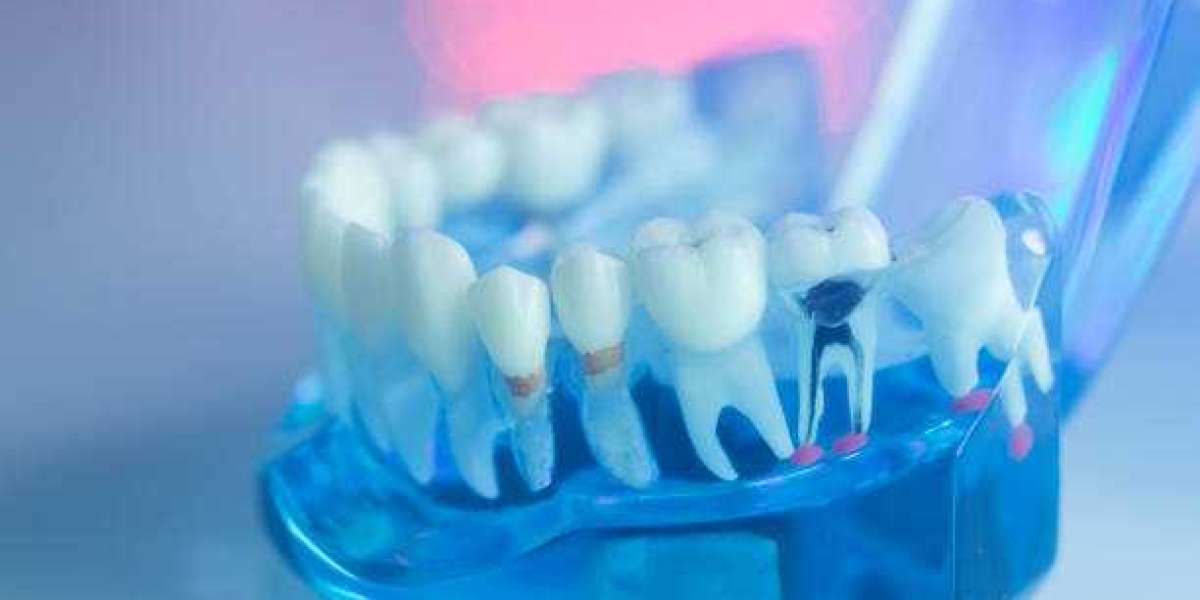Root canal treatment in Islamabad, once regarded with fear, is now one of the most effective and pain-relieving dental procedures available. Designed to save damaged or infected teeth, a root canal offers long-term benefits and helps patients avoid the complications of tooth extraction. This blog delves into the process, reasons for treatment, and how a root canal can help preserve your natural smile.
What Is Root Canal Treatment?
Root canal treatment (RCT) is a dental procedure aimed at removing infection from the inside of a tooth and preventing further damage. Each tooth contains soft tissue known as the pulp, which houses nerves and blood vessels. When the pulp becomes infected or damaged due to deep decay, cracks, or trauma, it can cause significant pain. If left untreated, the infection can spread, leading to more serious problems like abscesses, bone loss, or the need for extraction.
The goal of a root canal is to clean out the infected pulp, disinfect the inside of the tooth, and seal it off to prevent future infection. Unlike extraction, a root canal allows you to retain your natural tooth, which is essential for maintaining proper function and alignment.
Why You May Need a Root Canal
There are several reasons a dentist may recommend root canal treatment:
- Deep Tooth Decay: Cavities that are left untreated can eventually reach the pulp, leading to infection.
- Cracked or Chipped Tooth: Trauma to the tooth can expose the inner pulp to bacteria, causing inflammation or infection.
- Multiple Dental Procedures on the Same Tooth: Repeated dental work can irritate the pulp and increase the risk of infection.
- Severe Tooth Injury: Even without visible cracks, trauma from a fall or impact can damage the pulp inside the tooth.
Recognizing the signs of infection early is crucial. Symptoms that may indicate the need for a root canal include:
- Intense tooth pain, especially when chewing
- Prolonged sensitivity to hot or cold
- Discoloration or darkening of the tooth
- Swelling or tenderness in the gums
- A persistent pimple-like bump on the gums
If you experience any of these symptoms, it’s essential to visit a dentist as soon as possible to avoid complications.
The Root Canal Process: Step by Step
Root canal treatment is typically performed by a general dentist or an endodontist, a specialist in treating the insides of teeth. Here's a detailed look at the process:
Examination and X-rays: The dentist begins by examining the affected tooth and taking X-rays to assess the extent of the infection and identify the number of root canals in the tooth.
Administering Local Anesthesia: To ensure a pain-free experience, the dentist numbs the tooth and surrounding area with local anesthesia. Patients typically feel no pain during the procedure.
Creating Access to the Pulp: A small opening is made in the crown of the tooth, allowing the dentist to access the pulp chamber and root canals.
Cleaning and Shaping the Canals: The dentist carefully removes the infected or damaged pulp and disinfects the inside of the tooth. Special tools are used to clean and shape the canals for filling.
Filling the Canals: After the tooth is cleaned, the dentist fills the canals with a rubber-like material called gutta-percha, which seals off the space and prevents future infection.
Sealing the Tooth: A temporary or permanent filling is placed to close the opening. In most cases, a crown will be fitted during a follow-up visit to restore strength and functionality to the tooth.
Post-Treatment Care and Recovery
After root canal treatment, it’s normal to experience some mild discomfort, which can be managed with over-the-counter pain relievers. Any soreness or tenderness typically subsides within a few days.
To ensure proper healing and long-term success:
- Avoid chewing on the treated tooth until a permanent restoration (such as a crown) is placed.
- Maintain good oral hygiene by brushing twice daily and flossing regularly.
- Attend follow-up appointments with your dentist to monitor the progress of the tooth and ensure it is healing well.
Most root canal-treated teeth can last a lifetime with appropriate care. Regular dental check-ups are essential to keep your teeth and gums healthy and to prevent new infections.
Addressing Common Myths About Root Canals
Despite its widespread use and benefits, root canal treatment is often misunderstood. Here are some common myths debunked:
Myth: Root canals are painful. Thanks to modern techniques and anesthesia, root canals are no more uncomfortable than getting a standard filling. The procedure itself is designed to relieve the pain caused by the infection.
Myth: It’s better to pull a tooth than get a root canal. Saving your natural tooth is always the best option. Extraction can lead to problems like shifting teeth, bone loss, and the need for more expensive dental work such as implants or bridges.
Myth: Root canals cause illness. This misconception stems from outdated studies. There is no scientific evidence linking root canal treatment to systemic diseases. In fact, the procedure removes harmful bacteria from the mouth, improving your overall health.
The Benefits of Root Canal Treatment
Root canal treatment offers a variety of long-term benefits:
Pain Relief: Root canals alleviate the intense pain caused by an infected or damaged tooth.
Tooth Preservation: Unlike extraction, root canals preserve your natural tooth, helping to maintain proper function and bite alignment.
Infection Control: The treatment removes harmful bacteria from the tooth, preventing the infection from spreading to other teeth or gums.
Restoration of Function: Once a crown is placed, the treated tooth can function normally, allowing you to chew and speak with confidence.
Cost-Effective Solution: Root canal treatment is often more cost-effective than extraction and replacement options like implants or bridges, especially when considering the long-term impact on oral health.
How to Prevent the Need for a Root Canal
While root canal treatment is effective, prevention is always the best approach. To reduce the risk of needing a root canal, follow these oral health practices:
- Brush twice daily with fluoride toothpaste.
- Floss regularly to remove plaque between teeth.
- Visit your dentist for regular cleanings and check-ups.
- Address cavities or cracks promptly to prevent deep decay or infection.
- Wear a mouthguard during contact sports to protect your teeth from injury.
Conclusion
Root canal treatment is a safe, effective, and pain-relieving procedure that can save your tooth from extraction and protect your overall oral health. While many people fear the idea of a root canal, modern dentistry has made the process comfortable, quick, and reliable. By preserving your natural teeth, root canals contribute to a healthy, functional smile that lasts a lifetime. If you’re experiencing tooth pain or symptoms of infection, consult your dentist to see if a root canal is the right solution for you.








